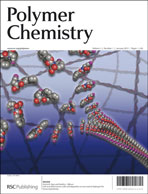Controlled synthesis of radiolabelled amine methacrylate water-soluble polymers with end-groups of varying hydrophobicity and studies of adsorption behaviour†
Abstract
The effect of chain end chemistry on the behaviour of poly(2-(diethylamino)ethyl methacrylate) has been studied through the placement of various radioactive


 Please wait while we load your content...
Please wait while we load your content...